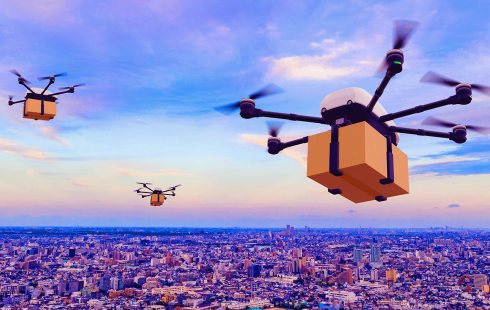26 Drone Companies Taking Flight Across Industries
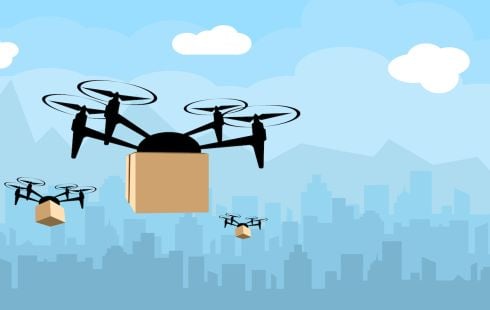
A drone refers to an aerial vehicle that receives remote commands from a pilot or relies on software for autonomous flight. Many drones display features like cameras for collecting visual data and propellers for stabilizing their flight patterns. Sectors like videography, search and rescue, agriculture and transportation have adopted drone technology.
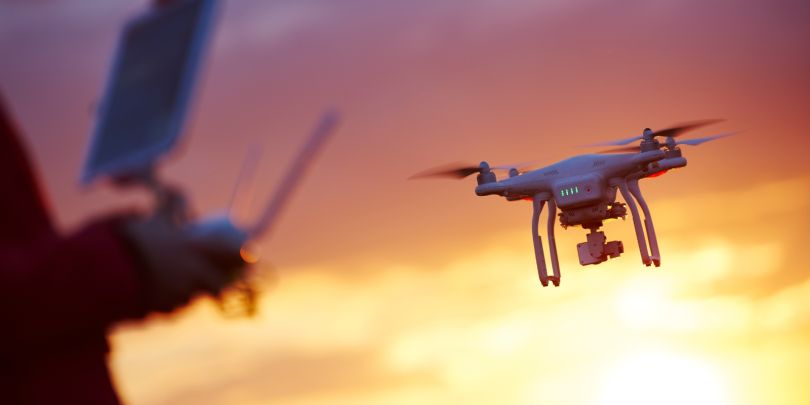
A drone, also called an unmanned aerial vehicle (UAV), is a broad term that refers to an aircraft that operates autonomously or by remote control, with no pilot on board. Drones are usually small-or-medium-sized, and these ‘flying robots’ can carry out a wide range of tasks, from stealth military operations to package delivery to aerial photography.
Another name for drones is unmanned aerial vehicle, which is an aircraft that doesn’t require a pilot to be physically onboard. UAVs are often separated into two categories — civilian and military. While civilian UAVs are used for package deliveries and recreation, military drones are used for reconnaissance missions and aerial combat.
Drone technology has become a greater part of everyday life due to its increasing complexity. Here are a few ways drones are used today.
Drones have been a boon for photographers who use UAVs to take expansive aerial photos. There are drones made specifically for photography that provide a new way to photograph some of your favorite city skyline, beach or building from high above. Drones can also be used to record videos for sporting events, films and virtual real estate tours, providing footage from unprecedented vantage points to enhance the viewing experience.
Delivery drones are UAVs used to transport food, packages or goods to your front doorstep. These flying vehicles are known as “last mile” delivery drones because they are used to make deliveries from stores or warehouses close by. Retailers and grocery chains all over the country are turning to drones as a more efficient delivery alternative, instead of relying on delivery drivers with inefficient trucks.
Sometimes it’s not safe enough to send humans into a rescue situation, due to the scope or severity of the disaster. That’s where drones come in. In the case of a capsized boat or drowning individual, officials can throw an autonomous underwater vehicle into the water to assist in the rescue. If there’s an avalanche, drones are deployed to look for those caught in the snow.
Drones have proven to be beneficial to the agriculture industry as well, presenting farmers with several ways to optimize their farms to maximize efficiency and reduce physical strain. Carrying out field surveys, seeding over fields, tracking livestock and estimating crop yield are all made easier through the use of UAVs while saving agriculture professionals valuable time.
Both local law enforcement and military personnel can operate more effectively with the help of drones. Police can use drones to monitor events, record and preserve video evidence of traffic violations and recreate crime scenes through mapping analysis. Meanwhile, military personnel can apply drone technology to track enemy soldiers’ locations, conducting more focused attacks and refining their strategies.
Thanks to lower costs, drones are much more accessible to the average consumer. Anyone can use drones for recreational use, like taking pictures for personal use or practicing flying a drone in a park. In addition, pilots must follow recreational regulations and ensure they have any required certifications before flying a drone for fun.
Drones are a cheaper and more efficient alternative to wildlife conservation. Tracking wildlife populations is nearly impossible with humans on the ground. Having an eye-in-the-sky allows wildlife conservationists to track roaming groups of animals and get a better idea of the health of their species and ecosystems. Drones are also being used for reforestation efforts all over the world.
LiDAR drones come outfitted with LiDAR sensors, which survey landscapes and compile in-depth data that can be used to build 3D models. Drones equipped with LiDAR can present far more accurate data than drones without the technology.
The British and U.S. militaries started using very basic forms of drones in the early 1940s to spy on enemies. Today’s drones are much more advanced than the UAVs of yesteryear, equipped with thermal imaging, laser range finders and even tools to perform airstrikes.
There are several different types of drones, each tailored to the unique demands of different industries. For instance, some people require lightweight drones to hold a camera for photography, while others need robust drones to transport heavy medical supplies.
Multi-rotor drones have several propellers that push wind downward to vertically lift off the ground. Multi-rotor drones are probably the most accessible drones available to the public, since they are easy to control and maneuver during flight. Some multi-rotor drones are ideal for beginner pilots as well, leading to them being an affordable option in the drone market.
Single-rotor drones look like tiny helicopters, with one central propeller attached to its frame. They can be powered by gas or electricity, and are usually used to transport heavier objects, including LiDAR systems, that can be used to survey land, research storms and map erosion caused by global warming.
Fixed-wing drones look like normal airplanes, where the wings provide the lift instead of rotors. Since these drones are usually much larger, they need to take off and land on runways just as airplanes do. Fixed-wing UAVs are used by the military to carry out strikes, by scientists to carry large amounts of equipment and even by nonprofits to deliver food and other goods to areas that are hard to reach.
Fixed-wing hybrid vertical takeoff and landing (VTOL) drones blend the best of fixed-wing and rotary drone models — they can take off and land vertically but then fly horizontally. Companies take advantage of this combination, relying on fixed-wing hybrid VTOL drones to further cut down on delivery times while offering a more versatile flight experience.
Drones companies have responded to the demand for drones in specific sectors as well. Below are some more popular types of drone technology designed for various scenarios:
In order to fly, drones rely on a combination of hardware and software components. They are often equipped with rotors, propellers or fixed wings, sensors and cameras, navigation systems (GPS) and gyroscopes for stability.
Additionally, some of the most critical components of drone technology are its ground control station (GCS), payload and data links. Ground control stations are the hardware and software setups that allow drone operators to communicate with a drone from the ground. The GCS can be user controlled or operated via satellites. Drones are often capable of carrying payloads, which can range from life-saving medication to Amazon packages. Data links act as the transmission center that allow the drone to communicate with the ground operator while in flight.
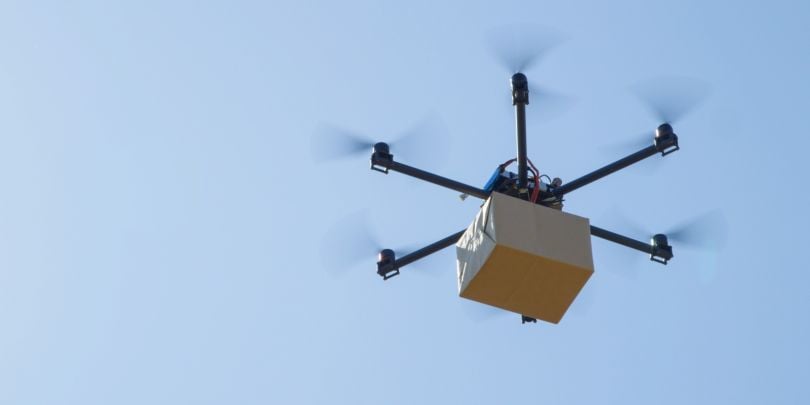
The global drone market is set to exceed $101 billion by 2032. While lower costs and more clear-cut regulations have made drones a viable option for individuals and businesses, technological innovation is perhaps the main driver behind the spread of drones.
Drones have become much more complex with the help of other technologies. By equipping drones with AI and machine learning, they have achieved greater autonomy and the ability to complete more difficult tasks. Combining drone and IoT technology has also resulted in drones that can share data in real time with other drones and human operators.
With increased intelligence and connectivity, it’s become possible to coordinate the movements of many drones at once. This powers what’s known as ‘drone swarms,’ which are capable of performing light shows as an alternative to fireworks. Enhanced drones can also make a meaningful impact in different industries:
The very developments that have made drones more complex have also created a new set of concerns for the future of drone technology.
Drones being flown in residential areas could capture private information, and the ability to instantly share this data with other drones and human operators poses another risk to data privacy. Even though the FAA has established drone regulations, these are still evolving and may not do enough to encourage ethical and transparent drone usage.
The application of drones in warfare has also ramped up, with the Russia-Ukraine war being labeled the “first full-scale drone war.” Drone weaponry could soon become even more lethal with the introduction of swarm technology. While a single drone can be shot down easily, swarms of drones are far more difficult to defend against.
It’s how drones are used that could turn the technology into a danger for everyday individuals. If regulations don’t do enough to promote the responsible use of drones, the general public may lose trust and reject drone technology as a whole.
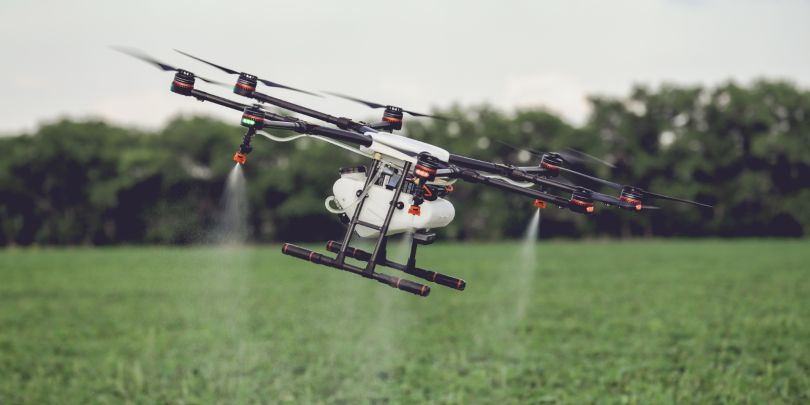
The proliferation of drones has led the U.S. government to take a stronger stance on regulating its airspace. These are the FAA regulations that apply to drones in all contexts:
Recreational use means no compensation or professional services are involved. Even if someone is unpaid but offers to take photos for a nonprofit or volunteer organization, this still counts as non-recreational. Besides the typical guidelines, there are a few extra rules those using drones recreationally must adhere to:
Those looking to become certified remote pilots or who want to fly drones commercially must meet a separate set of standards in addition to the general guidelines:
Non-citizens are allowed to fly drones in the U.S. as well, whether they’re merely visiting or establishing business operations. In addition to following U.S. rules for recreational and commercial drone use, international flyers must also abide by these rules:

